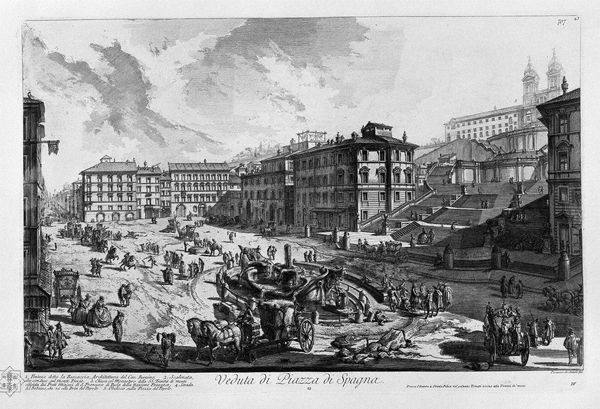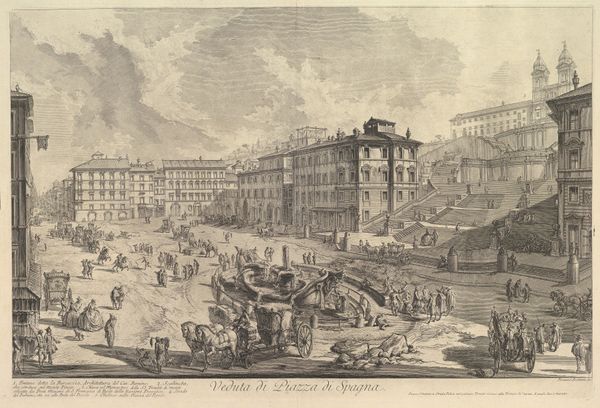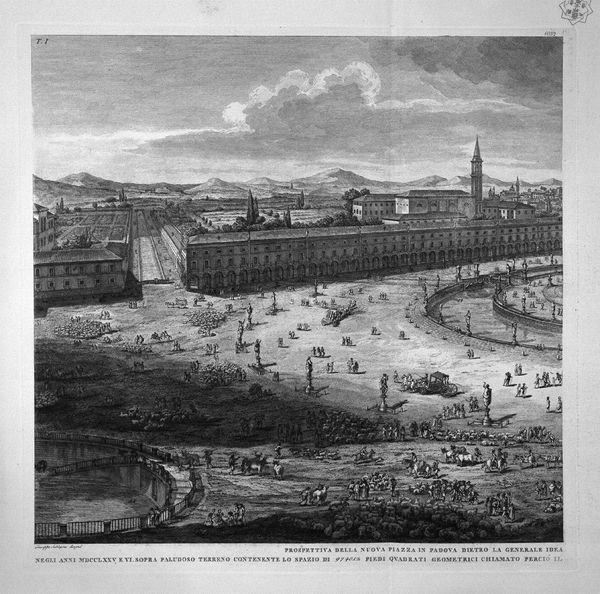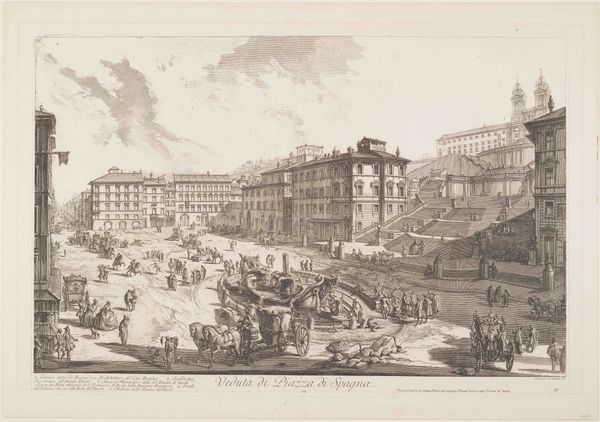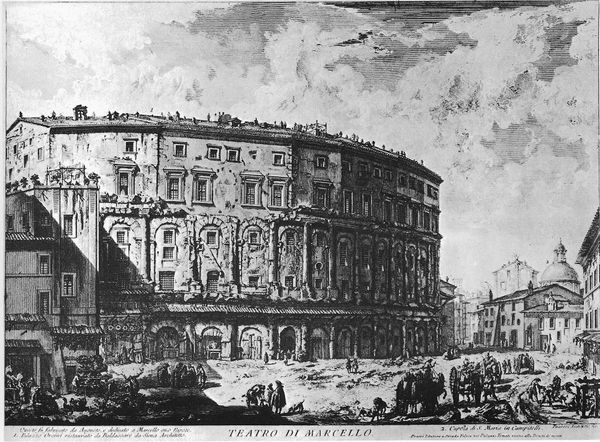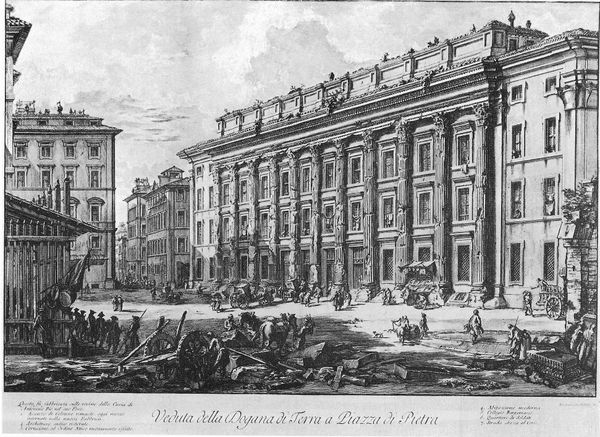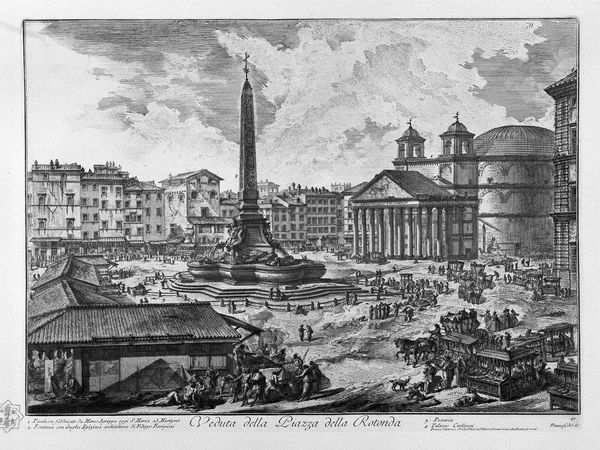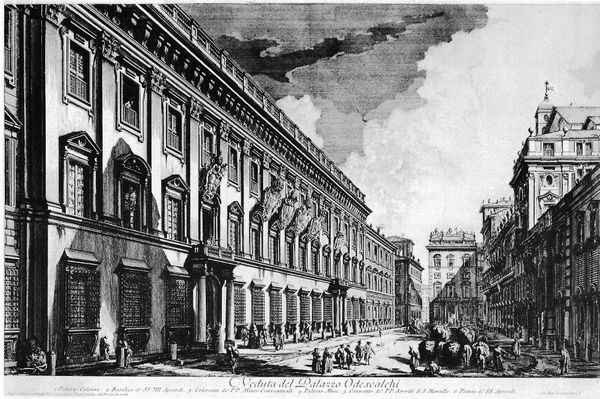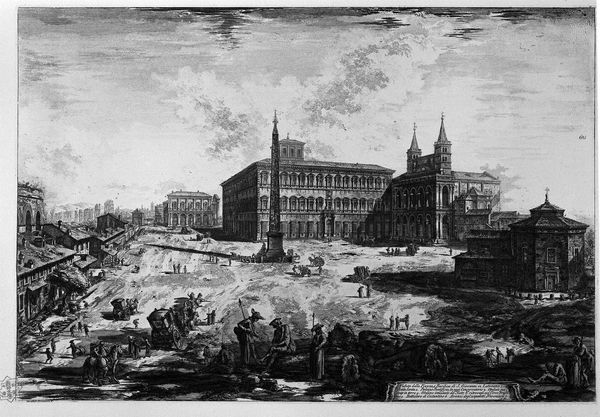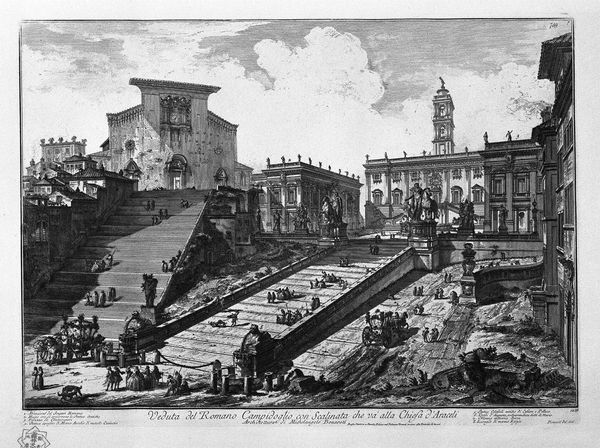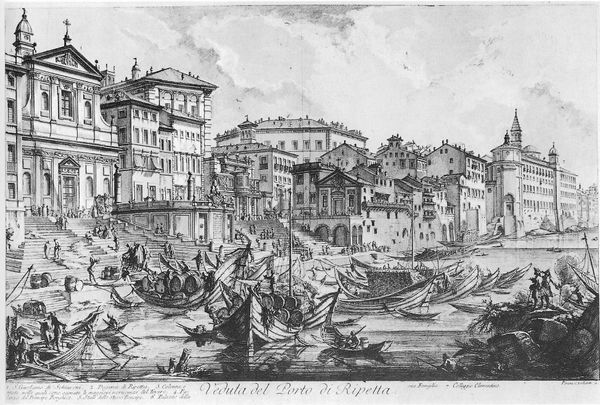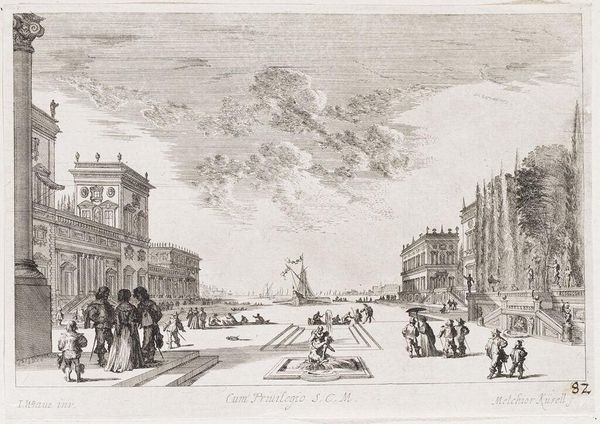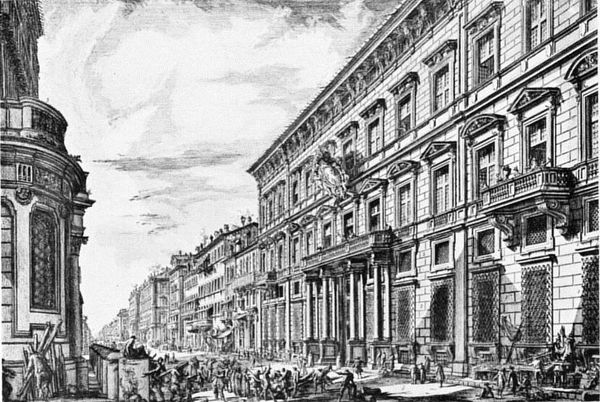
drawing, etching, engraving
#
drawing
#
baroque
#
etching
#
landscape
#
line
#
cityscape
#
italian-renaissance
#
engraving
#
realism
Copyright: Public domain
Editor: Here we have Piranesi's "Vedute di Roma," an etching. The detail is incredible; it feels almost photographic, capturing the hustle and bustle of 18th-century Rome. What particularly strikes you about this piece? Curator: It’s fascinating to consider this work as an artifact of 18th-century print production. Notice how Piranesi employs etching and engraving - these are not just reproductive techniques, but crucial to understanding his ambition. He’s essentially creating a commodity. How does the reproduction affect our experience, do you think? Editor: I hadn't considered that angle. Does the print medium democratize art, making it more accessible to the masses, but also maybe cheapening the experience of art, removing the aura around unique, handcrafted works? Curator: Precisely. Think about the socio-economic implications of mass-produced images. Piranesi is catering to the Grand Tourists, providing them with affordable souvenirs of their travels. The “authenticity” is wrapped up in that. But how does the labor of the artisan, the printer, influence the reception of "Vedute di Roma"? Are their efforts erased by Piranesi’s name? Editor: I see your point! We tend to focus on Piranesi as the artist-genius, but the etching process involved skilled artisans who shaped the final product. Their labor and the materials used, like the paper and ink, contribute significantly to the artwork’s value. Is Piranesi blurring the lines between art, craft, and industry here? Curator: Absolutely. The consumption of these prints by tourists also speaks to the rising mercantile economy of the time. It makes me wonder about the waste. What happened to flawed images? We only see what was deemed good enough to sell. Editor: This gives me so much to consider about the art world then, including its industrial and economic aspects that shaped our artistic legacy. Thank you. Curator: Indeed. It underscores how crucial understanding materials and methods of production is for a richer reading of the work.
Comments
No comments
Be the first to comment and join the conversation on the ultimate creative platform.
